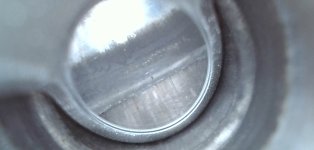I used to live near Forest Grove, its gone downhill in recent years with the homeless. Now im between Scappoose and Vernonia. Scappoose isnt what it used to be either, the Portlanders decided they dont like the policies they voted for so they have been pushing out this way.Over the years, I managed to live in Boardman, Baker City, Medford, Forest Grove, Warrenton, and Halfway. Some places are a bit bluer-haired than others. Some places strike a pretty good balance and some need to advance into the modern age. There’s a little something for everyone.
Join the Hide community
Get access to live stream, lessons, the post exchange, and chat with other snipers.
Register
Download Gravity Ballistics
Get help to accurately calculate and scope your sniper rifle using real shooting data.

Install the app
How to install the app on iOS
Follow along with the video below to see how to install our site as a web app on your home screen.
Note: This feature may not be available in some browsers.
You are using an out of date browser. It may not display this or other websites correctly.
You should upgrade or use an alternative browser.
You should upgrade or use an alternative browser.
Match grade barrel fouling after 40rds?
- Thread starter AustinCar32
- Start date
It is possible your chamber neck dia is tight and the case neck clearance is minimal, causing the carbon build up to decrease the clearance even more. Can you drop/slide a bullet into a fired case neck? If you can, that isn't the problem. If you can't get a bullet in the fired case mouth, then there is your answer.
“
This finally dawned on me last night too. I had a tight necked BR that was similar one time. @AustinCar32 what is your OD of a loaded round case neck and another of your fire case neck?It is possible your chamber neck dia is tight and the case neck clearance is minimal, causing the carbon build up to decrease the clearance even more. Can you drop/slide a bullet into a fired case neck? If you can, that isn't the problem. If you can't get a bullet in the fired case mouth, then there is your answer.
I'm kicking myself for not thinking/mentioning it sooner.“
This finally dawned on me last night too. I had a tight necked BR that was similar one time. @AustinCar32 what is your OD of a loaded round case neck and another of your fire case neck?
Hmmm, im not home to measure the cases until this evening. Although, i have tried dropping a bullet into a fired case and it went in with ease. I have not tried dropping a bullet into a case that experienced over pressure though, so maybe i would get different results
On all peices of fired brass that have no pressure signs, the bullet drops right in like normal. All peices of brass showing even minor pressure signs, i have to push the bullet in and the bullet will stay in place even if i turn the brass upside down and shake it.
Got the borescope, heres what i see. First picture is the shoulder area inside the bore, second pic is just before the rifling, i think may be a carbon ring?
Got the borescope, heres what i see. First picture is the shoulder area inside the bore, second pic is just before the rifling, i think may be a carbon ring?
Attachments
Pic 1: So you got fire cracking, which means there’s been substantial heat with history of firing. This is not something in which to be alarmed with a high volume comp rifle, but a hunting rifle it’s insane. Don’t ask a tool to do two things equally as good.
Pic 2: Yup, carbon ring.
Pic 2: Yup, carbon ring.
The fire cracking probly wouldnt cause my problems, right? And im assuming the carbon ring is most likely my problem this whole time?Pic 1: So you got fire cracking, which means there’s been substantial heat with history of firing. This is not something in which to be alarmed with a high volume comp rifle, but a hunting rifle it’s insane. Don’t ask a tool to do two things equally as good.
Pic 2: Yup, carbon ring.
Some level of fire cracking would be expected. Not an expert on how quickly it occurs though.
Maybe I'm a bit dense, but I do not see any fire-cracking in pic 1. Which is good, because fire-cracking should not be present at the shoulder area.
What I do see in pic 1 is chatter and tool marks. Whoever chambered that rifle should be ashamed of himself.

What I do see in pic 1 is chatter and tool marks. Whoever chambered that rifle should be ashamed of himself.
Considering the case neck clearance is changing at a rapid pace, as evidenced by the difference in the case necks bullet test, just focus on keeping the carbon ring in check. Your case neck clearance has got to be too little. Neck turning the brass is the only way to increase that clearance without rechambering with a reamer with larger neck diameter.The fire cracking probly wouldnt cause my problems, right? And im assuming the carbon ring is most likely my problem this whole time?
If I’m looking at pic #2 correctly, that seems like one heck of a carbon ring? I’m no expert, but my carbon rings have been waaaay more wimpy after way way more rounds.On all peices of fired brass that have no pressure signs, the bullet drops right in like normal. All peices of brass showing even minor pressure signs, i have to push the bullet in and the bullet will stay in place even if i turn the brass upside down and shake it.
Got the borescope, heres what i see. First picture is the shoulder area inside the bore, second pic is just before the rifling, i think may be a carbon ring?
Yeah, it’s like looking into an unfinished Death Star or somethingMaybe I'm a bit dense, but I do not see any fire-cracking in pic 1. Which is good, because fire-cracking should not be present at the shoulder area.
What I do see in pic 1 is chatter and tool marks. Whoever chambered that rifle should be ashamed of himself.View attachment 8654731
Does anyone have any pics of clean chambers that don’t look like someone lit off some white phosphorus in there? I don’t have one handy.
Maybe it would help set the OP’s expectations, for his chamber looks…odd.
That’s the problem with bore scopes. Everyone sees barrels as living in a binary state. The are shiny and perfectly machined, or the are rotted/pitted/cracked which means bad. There are states in between that still allow the barrel to still shoot reasonably accurately. What they don’t show are out of bounds chambers/throats and ammo deficiencies.
I got a borescope and know how to use it...stand by!View attachment 8655290
Does anyone have any pics of clean chambers that don’t look like someone lit off some white phosphorus in there? I don’t have one handy.
Maybe it would help set the OP’s expectations, for his chamber looks…odd.
Blue arrow is where the area just prior to the chamber wall where the carbon ring forms. This is a clean barrel, of course with Thorroclean, and no ring is visible. The yellow arrow is where the lands begin, thus muzzle direction.

Directions flipped, but you see where a case its in the chamber just prior to chamber wall.

Then if the ugly black ring you see below is formed in that area where the case neck sits, it decreases the clearance, because the case neck would sit on top of the carbon ring crud.

Directions flipped, but you see where a case its in the chamber just prior to chamber wall.
Then if the ugly black ring you see below is formed in that area where the case neck sits, it decreases the clearance, because the case neck would sit on top of the carbon ring crud.
Pretty thin skin dude, didn’t even have to work very hard to get you to freak out.Blue arrow is where the area just prior to the chamber wall where the carbon ring forms. This is a clean barrel, of course with Thorroclean, and no ring is visible. The yellow arrow is where the lands begin, thus muzzle direction.
View attachment 8655418
Directions flipped, but you see where a case its in the chamber just prior to chamber wall.
View attachment 8655421
Then if the ugly black ring you see below is formed in that area where the case neck sits, it decreases the clearance, because the case neck would sit on top of the carbon ring crud.
View attachment 8655423
HAHAHA! Man, I'm glad you laughed with it! I was in stitches making that!Pretty thin skin dude, didn’t even have to work very hard to get you to freak out.
Similar threads
- Replies
- 157
- Views
- 4K
- Replies
- 12
- Views
- 553



